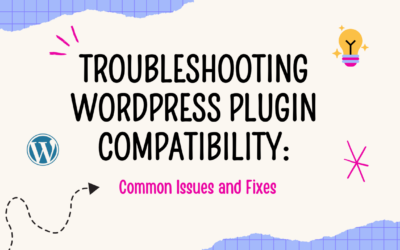Introduction:
As your WordPress website grows and attracts more visitors, ensuring it can handle high traffic becomes crucial. Scaling WordPress involves optimizing both the front-end and back-end to maintain performance and reliability. This article focuses on PHP optimization techniques, followed by Hike Branding developers, that can help scale your WordPress site to handle increased traffic efficiently.
1. Optimize Database Queries
Database queries are often the most resource-intensive operations on a WordPress site. Optimizing these queries can significantly improve performance.
- Use Efficient Queries: Avoid using SELECT * in your SQL queries. Instead, specify only the fields you need. This reduces the amount of data retrieved and processed.
- Leverage Indexes: Ensure your database tables are properly indexed. Indexes help speed up the retrieval of data, particularly on large tables.
- Avoid Unnecessary Queries: Cache the results of expensive queries, and avoid running the same query multiple times in a single request.
2. Implement Caching Mechanisms
Caching is one of the most effective ways to reduce server load and improve response times.
- Page Caching: Use plugins like WP Super Cache or W3 Total Cache to store static versions of your pages. This reduces the need for PHP processing on each request.
- Object Caching: Utilize object caching to store database query results in memory. Tools like Redis or Memcached can be used for this purpose.
- Opcode Caching: Enable opcode caching with tools like OPcache, which stores precompiled PHP script bytecode in memory, reducing the need for script compilation on each request.
3. Use a Content Delivery Network (CDN)
A CDN can offload the delivery of static assets (like images, CSS, and JavaScript) from your server, reducing load and latency. By distributing content across a network of servers closer to your visitors, CDNs can significantly improve site speed and reliability.
4. Optimize PHP Code and Configurations
Efficient PHP code and server configurations are essential for handling high traffic.
- Reduce External HTTP Requests: Minimize the number of external resources your site needs to load. Each external request adds latency and can slow down page load times.
- Use Autoloading Efficiently: Use Composer’s autoload feature to load classes only when needed, reducing memory usage and improving performance.
- Adjust PHP Settings: Optimize PHP configurations, such as increasing the memory limit and max execution time, to handle larger processes. Be cautious with these settings to avoid exhausting server resources.
5. Load Balancing and Clustering
For extremely high traffic sites, consider using a load balancer to distribute traffic across multiple servers. This approach, known as horizontal scaling, can significantly increase your site’s capacity.
- Load Balancers: Tools like Nginx can distribute incoming traffic across multiple application servers, ensuring no single server becomes overwhelmed.
- Database Clustering: Use database replication and clustering to distribute database load. Master-slave setups can help distribute read operations, while sharding can distribute data across multiple servers.
6. Optimize Images and Media Files
Large media files can slow down your site and increase server load.
- Image Compression: Use tools and plugins to compress images without losing quality. This reduces file sizes and improves load times.
- Lazy Loading: Implement lazy loading for images and videos, so they only load when they come into the viewport. This reduces the initial page load time.
7. Monitor and Analyze Performance
Regular monitoring and analysis are crucial for maintaining a high-performing site.
- Use Monitoring Tools: Tools like New Relic, Pingdom, or GTmetrix can help you monitor site performance and identify bottlenecks.
- Analyze Logs: Regularly review server logs to detect errors and performance issues. This can help you address potential problems before they impact your site.
8. Optimize the WordPress Core and Plugins
Ensure that both the WordPress core and any installed plugins are optimized and up-to-date.
- Update Regularly: Keep WordPress core, themes, and plugins up to date. Updates often include performance improvements and security patches.
- Minimize Plugins: Only use essential plugins, as each additional plugin can increase load time and resource usage. Review and deactivate or remove any unnecessary plugins.
9. Security Considerations
Scaling also involves ensuring your site remains secure under high traffic conditions.
- Use a Web Application Firewall (WAF): A WAF can protect your site from malicious traffic and reduce the load on your server.
- Secure Data and Sessions: Implement secure practices for handling user data and sessions to prevent data breaches and ensure user trust.
10. Plan for Future Growth
Scaling is an ongoing process. As your site continues to grow, regularly revisit your optimization strategies and be prepared to implement new technologies and approaches.
- Cloud Solutions: Consider cloud hosting solutions that offer scalability and flexibility to accommodate traffic spikes.
- Regular Audits: Conduct regular performance audits to identify areas for improvement and ensure your site remains optimized.
Conclusion
Scaling a WordPress site to handle high traffic involves a combination of PHP optimization techniques, efficient server configurations, and regular monitoring. By implementing these strategies, followed by Hike branding developers, you can ensure your site remains fast, secure, and reliable, even as your traffic grows. Stay proactive and continuously optimize your site to meet the demands of your expanding audience, ensuring a smooth and engaging user experience.



